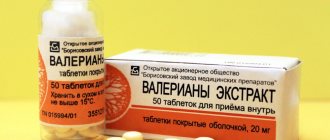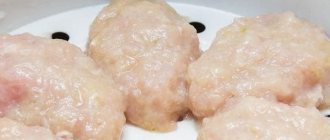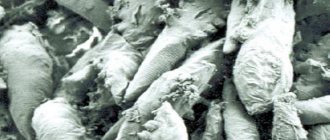Sometimes it can be unbearable that your beloved pet is suffering, but you cannot help him due to a simple misunderstanding of the situation. This is the case when a dog is constantly itching. And there seem to be no fleas, no ticks, but the dog persistently continues to tear the skin and gnaw at itself. Sometimes the situation reaches the point where the fur flies out in clumps, and bleeding wounds form in the place where it was missing. In this case, there is a possibility of a bacterial infection. Then the situation becomes twice as complicated. Therefore, veterinarians recommend not to delay, but to find out the cause of scabies right away.
The dog is itching
Fleas and lice eaters
Flea bites also cause severe itching in dogs. The pet is restless, constantly bites itself, and itches. Massive attacks simply drive the animal crazy. Due to constant scratching, the itching can be accompanied by a bacterial infection, dermatitis, eczema, urticaria, and swelling of the skin.
Some types of fleas are carriers of dangerous diseases - endocarditis and rickettsiosis. These pathologies cause severe symptoms of intoxication in the animal. In this case, large vesicles appear on the skin. But the greatest danger lies in the likelihood of human infection.
Fleas often carry worm larvae in their bodies. If a dog chews a parasite, then the likelihood of the helminth entering the dog’s intestines is quite high. Therefore, along with treating a dog for fleas, it is recommended to carry out anthelmintic therapy.
Fleas on a dog
Lice eaters also cause severe itching. Infection occurs during a walk, through contact with a sick dog. The infection can also be transmitted from mother to puppy. A pet can also become infected due to the fault of a person who brought parasite eggs into the house with clothes or shoes.
Lice eaters are carriers of infections and tapeworms. The main symptoms of parasite exposure are:
- severe scratching, scratches, wounds, irritation and eczema;
- the presence of moving white grains in the fur, reminiscent of dandruff;
- dullness, discoloration, hair loss;
- baldness in the area of the tail, chest, head, thighs;
- thirst, lack of appetite;
- anxiety.
Numerous lice on the dog's fur
Attention! Lice eaters look like lice. Their distinctive feature is the quadrangular shape of the head. They have a yellowish or grayish tint. They feed on particles of skin and fur.
Getting rid of fleas with folk remedies
What to do for itchy skin at home - bathing and care
This may not seem like a “natural” remedy, but if your dog suffers from environmental allergies, frequent baths will provide much-needed comfort. Using soothing ingredients such as oatmeal in shampoos is beneficial to the skin and relieves the itching your dog feels. Depending on the severity of the allergy, bathing once a week will significantly improve the condition. Brushing and brushing will also help remove dead skin (the dead layer of skin - epidermis) and shed hair, promoting the body's natural regeneration and new growth of a healthy, shiny coat.
Allergic reactions
If your dog itches regularly, this symptom may be due to an allergy. This means that the body reacts negatively to the introduction of a foreign element. Usually everything alien and useless is quickly removed from it. For dogs with allergies, everything happens differently. At the moment of entry of a foreign organism, an inflammatory process is started with the simultaneous release of the mediator of the allergic reaction (histamine) into the blood. It is this organic compound that is responsible for the activation of immune cells. Under the influence of foreign elements, it enters the active phase and manifests itself in the form of itching, rash, redness, swelling, hyperemia, etc.
Almost always, allergies to animals are transmitted genetically. Long-term stress and anatomical features of the endocrine and nervous systems can also provoke negative reactions in the body.
The most common sites of allergy in dogs
The course of the disease in dogs has the following characteristics:
- its course is more complex, that is, it has more severe symptoms than other four-legged animals and people;
- a large number of allergens;
- symptoms appear most on the skin;
- With age, the manifestation of allergies intensifies.
Cause unwanted body reactions in dogs:
- change of feed, some food products;
- care products for ticks, fleas and other parasites;
- vaccination, taking certain medications;
- parasite bites and excretion of their metabolic products;
- viruses, bacteria, fungi, helminths.
An allergy can appear immediately after contact with an irritant or over time.
Allergies on the stomach and paws of a dog
Along with severe itching, the following signs appear:
- a large amount of mucus is released from the nose and eyes (has no color, unlike infectious and viral exudate);
- the skin on the paw pads is dehydrated, dry, flaky, and there is redness in the interdigital area;
- rash, redness, swelling, scratching on the skin;
- wet tracks in places where the dog rests (excessive sweating);
- frequent bowel movements, possible diarrhea;
- inflammation in the ears.
Important! Excessive sweating in dogs always indicates health problems. There are sweat glands between the toes and on the muzzle. The animal's sweat is not similar in consistency to human sweat. It is more viscous and has a smell (not dog!).
Here is a video showing the reasons for scratching dogs without the presence of fleas and ticks:
Video - Why is your dog itchy but there are no fleas?
Treatment of eczema in dogs
To prescribe the correct treatment, the veterinarian determines the cause of the disease. He conducts a clinical examination, collects anamnesis, sends blood and urine for analysis, and tests for allergens. If necessary, the veterinarian will prescribe an ultrasound of the abdominal cavity. To make diagnosis easier, keep a diary in which you write down everything that happens to your pet. Take photographs of the condition of the affected area indicating the date so that the specialist can track the pathological changes over time.
Treatment of eczema is divided into the following stages:
- Preliminary.
- Treatment of the underlying disease.
- Symptomatic therapy.
- Rehabilitation.
- Preventing exacerbations.
The preliminary stage begins before the research results are deciphered. You evaluate the conditions of keeping and feeding, and independently eliminate the causes that could cause the inflammatory skin disease. If interdigital pyoderma occurs, you will need to move your dog to a dry area with a hard floor. When eczema appears in a decorative dog during the heating season, humidify the air in the room with a spray bottle, move the rookery away from the radiator. Remove potential allergens - indoor plants - from the room where your pet lives, and refrain from smoking and cosmetics.
Expel fleas from your pet and treat the apartment against ectoparasites. Check the ammunition, make sure that the muzzle or collar does not rub the skin. If skin rashes appear after using the flea collar, remove it: the dog may be allergic to the insecticide.
Review your diet. If hypersensitivity to components of the feed mixture has developed, transfer your pet to ready-made hypoallergenic food. Stop bathing your dog and do not use shampoo unless absolutely necessary. Avoid stressful situations; if in doubt, use sedatives. Do not walk short-haired white dogs in sunny weather.
After meeting the described requirements, the dog often recovers and does not need further stages of treatment.
After deciphering the results of laboratory tests, the veterinarian develops a treatment strategy. If an underlying disease is detected, treatment begins. Otherwise, they move to the next stage - use symptomatic remedies. They use medications that relieve inflammation and stop itching. If dermatitis occurs in a dry form, use moisturizing external agents - ointments and creams. To treat weeping eczema, sprays and drying powders with an antiseptic effect are used. If external and internal remedies do not help, desensitizing agents are administered intravenously.
I remember a case when I managed to cure weeping eczema that arose on the back of a yard dog. This was a long time ago, before I entered the veterinary faculty. There were streptocide tablets at home. I rubbed them and sprinkled them on the wound. The next day I saw that the ulcer began to dry out. I repeated the treatment 3 days in a row. A week later, the wound was covered with a dense crust, and after 30 days new hair grew.
When it is possible to relieve the itching and stop the inflammatory process, the veterinarian prescribes wound-healing external and restorative injections for rehabilitation after the illness. Medicines that prevent exacerbations of chronic diseases are prescribed for life for dogs with incurable hereditary abnormalities.
How do different forms of allergies manifest in dogs?
| Type of allergy | Characteristic symptoms |
| Food | The skin turns red and rashes form; the dog tears the skin, bites itself due to severe itching; baldness, hair loss; the skin is dehydrated, peeling appears; diarrhea, frequent bowel movements; increased sweating; candidiasis in the ears |
| Contact dermatitis | Itching, swelling, redness, roughening of the skin; the peritoneum, feet, area below the mouth, scrotum, interdigital space are mainly affected; peeling and redness in the area of the paw pads; hair thinning; anxiety. Appears immediately after contact with an irritant |
| Atopic dermatitis | Affects the area of the ears, groin, armpits, muzzle, paws; These areas are constantly licked by the dog |
| Drug allergy | Occurs immediately after treatment of fur, skin or ingestion of medication; localized on the face or in the area of treatment with the product; pimples are outlined; often accompanied by anaphylactic shock |
| Otitis of allergic origin | Itching, redness, swelling in the ears; increase in temperature in the specified area; lethargy, weakness |
Stress
Stress in a dog can also lead to the animal constantly itching. Four-legged animals suffer from neuroses much more severely than humans. Prolonged stress leads not only to itching, but also biting, restlessness, increased licking of certain parts of the body, and even hair loss.
Does the dog bite its tail? Maybe she's stressed
The dog can also:
- rushes around the apartment in circles for no reason;
- do not listen to the owner’s commands;
- whine, bark and howl;
- bite the tail;
- chew everything that gets in her way;
- dig while in the apartment;
- eats all the time (cannot get enough) or, on the contrary, refuses to eat;
- drooling, breathing heavily, going to the toilet frequently;
- hide in a corner, tremble;
- don't sleep.
Important! Neuroses are especially evident in dogs at night. If a dog asks to scratch its belly before going to bed and shows signs of anxiety, this means that it has problems with the nervous system.
Video - How to remove fleas from a dog at home
Itching and skin diseases
There are many diseases that lead to intense scratching in dogs. The most common ones are:
- Sebaceous tail (dysfunction of the sebaceous glands). Itching is observed in the anus and sacrum, accompanied by the appearance of blackheads. The animal constantly reaches out to these places and licks them. The itching subsides for a while, but then returns, causing the dog to worry. The progressive stage leads to baldness in the area of the base of the tail and back. Acne can spread to the ears and other areas of the body.
- Endometritis . An inflammatory disease that develops in the uterus. At the same time, the dog constantly licks itself and drinks a lot, and its body temperature is increased. In the advanced stage, there is loss of appetite and hair loss.
- Fungal diseases. Typically, dogs are diagnosed with microsporia, which is caused by exposure to the fungus Microsporum canis. Only a veterinarian can detect pathology under an ultraviolet lamp. Areas affected by the fungus are highlighted in green.
Fungal diseases on a dog's paw
- Staphylococcal and streptococcal infections. The areas most affected are the base of the tail, anus, and thighs. A rash appears in these areas. The lesion is hot, very itchy and painful when touched. If the disease is not treated, the inflammation will spread to other areas. In this case, there is a possibility of developing sepsis and tissue necrosis.
Staphylococcal lesions on the dog's face
- Lichen. Characterized by the appearance of bald patches. The itching is not severe.
- Pityrosporosis. It appears in the chin area, lip folds, and ear canals. The main symptom is the appearance of a rash with mucus.
- Aujeszky's disease (pseudorabies) . The causative agent of the disease is herpesvirus. The disease is highly contagious. It begins with copious discharge from the eyes and nose. A characteristic symptom is unbearable itching. The symptom can be so severe that the dog literally chews through the itchy areas of the body. Unfortunately, the likelihood of a cure here is quite low.
Attention! Long exposure to sunlight can also lead to itching in dogs. Most often this applies to pets with short hair. Sunburn leads to severe itching. At the same time, the dog tries to scratch the burned areas. Upon contact with them, the pet begins to howl in pain. Redness, blistering, and increased body temperature may occur.
Read more about the causes of itching in dogs here:
Video - Itching in dogs
Symptoms
Depending on the disease that caused the itching, different accompanying symptoms will be observed. If your dog scratches his ears and whines, this is a clear sign that he is in pain. This can even lead to attacks of aggression, especially when a person touches a sore spot. Pain in the ears and jaws when chewing often accompanies otitis media. The animal also tilts its head to the side, thereby reducing the pressure inside the ear.
Infectious otitis media occurs with fever, weakness, and loss of appetite. The auricle turns red and becomes hot, a putrid odor emanates from it, and the ear canal becomes covered with purulent crusts. If your pet has otitis media or internal otitis media, his hearing will begin to deteriorate, which may result in complete hearing loss. An allergic reaction is indicated by constant scratching of the ears and eyelids after contact with an allergen. With allergic eczema, small bubbles with liquid contents form in the ears.
READ ALSO: 24 tonics for problem skin: with zinc, for acne and blackheads, antibacterial and professional cleansing, reviews about sebum regulating
If a dog scratches its ears until it bleeds, shakes its head and bends it towards the ground, this indicates unbearable itching, caused by a tick. With this disease, a dark liquid is released from the ears, which quickly dries out and forms crusts, and on the outer side of the auricle the fur thins and wounds from scratching appear.
How to relieve your dog from itching
Treatment methods for itching depend on the cause that caused it. If the source of the symptom is exposure to ticks, the veterinarian will prescribe the following medications:
- Benzyl benzoate ointment (20%, 10%) is used twice a day every 2 days - treats itching caused by scabies mites;
- Spregal aerosol - can also be given to pregnant bitches; a single use is enough to get rid of scabies mites;
- to treat ear mites, the ear canals are treated with boric alcohol, then instilled with Anandin, Tsipam, Dekta, Demos, Bars, TAP-85 or Dicresil . The course of treatment is from 2 to 4 weeks;
- after scratching, the damage is lubricated with anti-inflammatory ointments with a healing effect ( Konkov, Wilkinson, sulfur, sulphur ointments ).
Benzyl benzoate ointment to relieve dogs from itching
For fleas they use:
- drops Bars, Frontline, Stronghold ;
- collars – Kiltix, Hartz UltraGuard Flea & Tick Collar, SKALIBOR, Beaphar Ungezieferband (suitable for removing ticks);
- shampoos – Fitoelita, Master Bruno ;
- tablets – Sentinel, Comfortis ;
- sprays – Frontline, Blokhnet, Hartz, Bolfo ;
- apple cider vinegar, lemon water.
Spray Frontline
Allergies in dogs are treated with the following medications:
- In case of food allergies, provoking foods are excluded from the diet;
- Enterosgel and black activated carbon are prescribed to remove allergens from the body ;
- Tykveol is prescribed to normalize metabolic processes ;
- acute forms of allergies are treated with antihistamines - Claritin, Suprastin, Tavegil ;
- when a secondary infection occurs, antibiotics and antifungal drugs are prescribed.
Anti-allergy tablets Tavegil
Important! If you have a food allergy, your dog is fed hypoallergenic food.
What to apply to a dog for itchy skin - the beneficial properties of apple cider vinegar
Natural, raw, unfiltered apple cider vinegar can be a good remedy for a pet suffering from allergic skin dermatitis. If your dog has itchy skin, you can mix apple cider vinegar and water 1 to 1. Place the solution in a spray bottle for easy use. In addition, this spray repels fleas and ticks, which not only carry serious diseases, but can also cause an allergic reaction. You can also use the solution to clean your dog's ears. The acidity of the mixture creates conditions in which the yeast cannot live, and yeast infections usually cause allergies. Make sure the acidity is not too high for your dog - alternatively, you can reduce the percentage of vinegar by adding more water.











